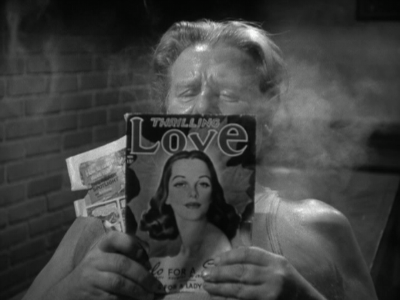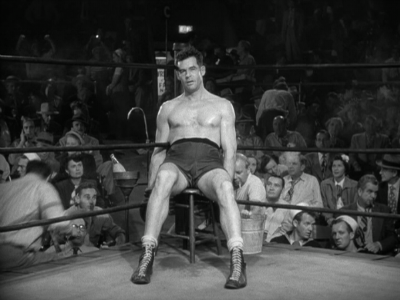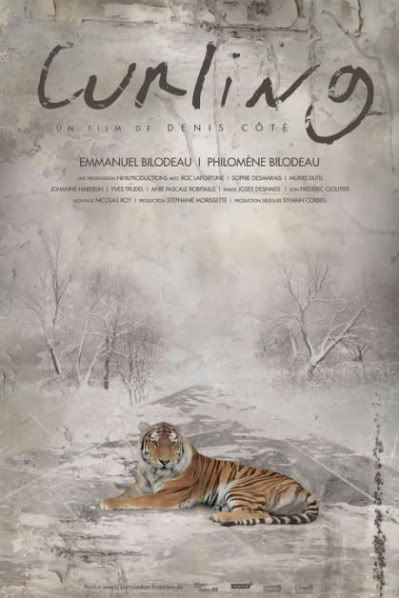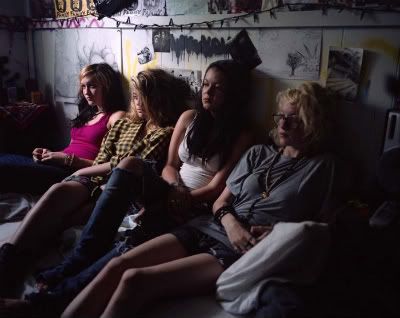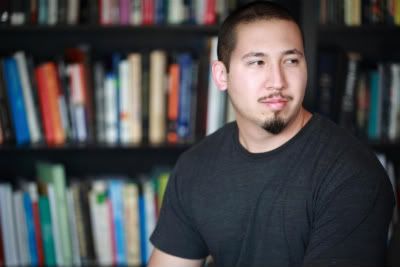
[
Psychohydrography, a high-res, time-lapse HD project surveying the Los Angeles water system; from the Eastern Sierra Nevada to the LA river to the Pacific ocean, is truly one of a kind visual & aural experience. I had an opportunity to meet with its Director Peter Bo Rappmund who was in town for the Documentary Fortnight at the Museum of Modern Art screening back in February. ]
*Many thanks to Dave Kim at KAFFNY for arranging the interview:
Can you tell me a little about your background?
I am Korean American- my mom is Korean and my dad is of German descent. I lived all over the Western US: Wyoming, North Dakota, Texas, Arizona, Colorado and California. I did undergraduate studies at the University of Colorado and was originally learning business. I changed to film studies after discovering that Stan Brakhage was teaching there. I was at CU before and after he passed away. It felt like a time of transition in the film school. The South Park guys, who had also gone to school in Boulder, were becoming quite famous and most of my friends seemed to be interested in narrative filmmaking. Still, there was a small group of us who looked towards the avant-garde. I actually didn't do a film for a long time after getting my first degree. When I went back to school, I went for music. An adviser told me that I should check out CalArts (California Institute of the Arts). I eventually landed there and met many great people along the way. I ended up graduating with degrees in Music Composition and Film.
And that's where you made Psychohydrography?
Psychohydrography was my thesis project that I worked on for 2 years. I shot it mostly alone. Sometimes my wife would come out with me but mostly it was just me and my dog.
The Music and sound are an integral part of your film. How important was the music for this project?
Yeah, I did record the location sound and used it throughout. But the music at the end (the Pacific ocean segment) is where it all came together for me. I showed it to some people before it was finished and they really responded emotionally to that part with the music. So I decided to make the arc of the film with that ending and kind of worked back and changed the sound design. Visually it had more cohesion after I did the last part. I realized that I could tie together more with the sound and not rely so much on each image butting up against each other. I ended up telling what's going on through the sound.
There is certainly a rhythmic quality throughout. Can you tell me about the process?
I was shooting with a DSLR camera (Nikon D90) with an intervalometer attached to it. Whenever I wanted to change the speed of the timelapse, I could manipulate it with a button. It's definitely a time consuming process, and you have to be actively engaged the whole time. In creating the layout of the film, I went to Costco and developed the stills and would use these for something like a storyboard. The photos are like fashcards that I can flip through sequentially.
Psychohydrography was originally closer to two hours, so it was a very big stack of photos. In terms of non time-based media, I also looked to a lot of photo books and comics to study sequencing.
You mentioned Stan Brakhage. Are there other filmmakers who influenced you?
Phil Solomon, Betzy Bromberg, Charlotte Pryce, Thom Andersen, they all had a big influence on me. Jack Chambers'
Hart of London is one of my favorite films. Also, thanks to Phil Schrader's Transcendental Style in Film has been critical to one aspect of my filmmaking.
The film reminded me a lot of Ed Burtynsky's photographs and the documentary, Manufactured Landscapes.
Yes. I didn't get to see that film until I finished my own project. I appreciate a lot of Burtynsky's work.
It also reminded me of James Benning's work.
Yeah. I did show it to James Benning (who teaches at CalArts) and he had an interesting reaction to it at first. (laughs) I think he has very strong principles about filmmaking. And I can't imagine he would ever use time-lapse. The aesthetic of my flm doesn't involve the slick type of time-lapse, not like something you'd find in
Baraka or
Koyaanisqatsi. The timelapse goes with the theme of water and its transient nature. I'm sure you noticed the flicker watching the film. Each shot being comprised of many single frame images, there are inevitable aperture issues. I have the control to correct this, but sometimes I would leave it to instill a more organic feel.
Watching it on the big screen (MoMA screening) was such a striking experience. Where do you go from here? There will be Blu-ray DVDs made?
It's such a high-res image, it really doesn't do justice when it's compressed to DVD format. Blu-ray is better of course. It did play at some festivals and hopefully will get more chances to be seen on the big screen. It will also be playing in the Gallery setting (White Box Gallery, NY). It will be interesting to see how people react to it.
I hope it gets to play on the big screen more often. It needs to be seen that way.
PSYCHOHYDROGRAPHY preview 1080P from Peter Bo Rappmund on Vimeo.
KAFFNY 2011 opens this Thursday!!






